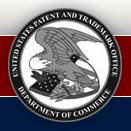Death, taxes, and uncertain patent laws.

The February 2008 issue of the ABA Journal has a very good article about patent law entitled “Reinventing Patent Law.” In the article, the author, Steve Seidenberg, notes that all three branches of the US government are changing (or have changed) patent laws in ways that negatively impact the rights of patent owners. Here’s one quote from the article:
While the courts have been making life more difficult for patent holders, the Patent and Trademark Office has been making life tougher for would-be patentees. For one thing, the PTO is approving a smaller percentage of the patent applications it receives. During the federal government’s 2000 fiscal year, the office approved 72 percent of the applications submitted to it. In 2007, the approval rate had dropped to 51 percent.
This is, of course, old news to patent practitioners. I’ve been a member of the patent bar since 1994, four years before the CAFC’s decision in State Street Bank & Trust Co. v. Signature Financial Group Inc., 149 F.3d 1368, opened the doors to business methods patents. Since State Street, patent litigation has increased and patent malpractice insurance rates have skyrocketed. Many solo practitioners have joined larger firms, gone out of business, or chosen to practice without malpractice insurance.
When big firms sue, small firms pay the price with higher malpractice rates.
The changes in patent law have lead me to tell clients that I’m a patent pending attorney now and that they should:
[e]xpect to pay more for, wait longer for, and get less from your patent application.
Not exactly a pleasant message to deliver to existing or prospective clients.
Dennis Crouch summed it up nicely with this quote (from 1895):
It should also be borne in mind that no property is so uncertain as “patent rights”; no property more speculative in character or held by a more precarious tenure. An applicant who goes into the patent office with claims expanded to correspond with his unbounded faith in the invention, may emerge therefrom with a shriveled parchment which protects only that which any ingenious infringer can evade. Even this may be taken from him by the courts. Indeed, it is only after a patentee has passed successfully the ordeal of judicial interpretation that he can speak with any real certainty as to the scope and character of his invention. Especially is this true of patents on spring-tooth harrows. E. Bement & Sons v. La Dow (C.C.) 66 Fed. 185 (Circuit Ct. N.Y. 1895)
I have not met a patent practitioner who is opposed patent reform or who favors any of the proposed changes. Something has got to give.
At least I have patent leather shoes to fall back on. Not all patent practitioners are as lucky.



From my archives: Reinventing Patent Law… http://is.gd/eIP7
See also:
Five Reasons You Should No Longer Bother Getting U.S. Patents